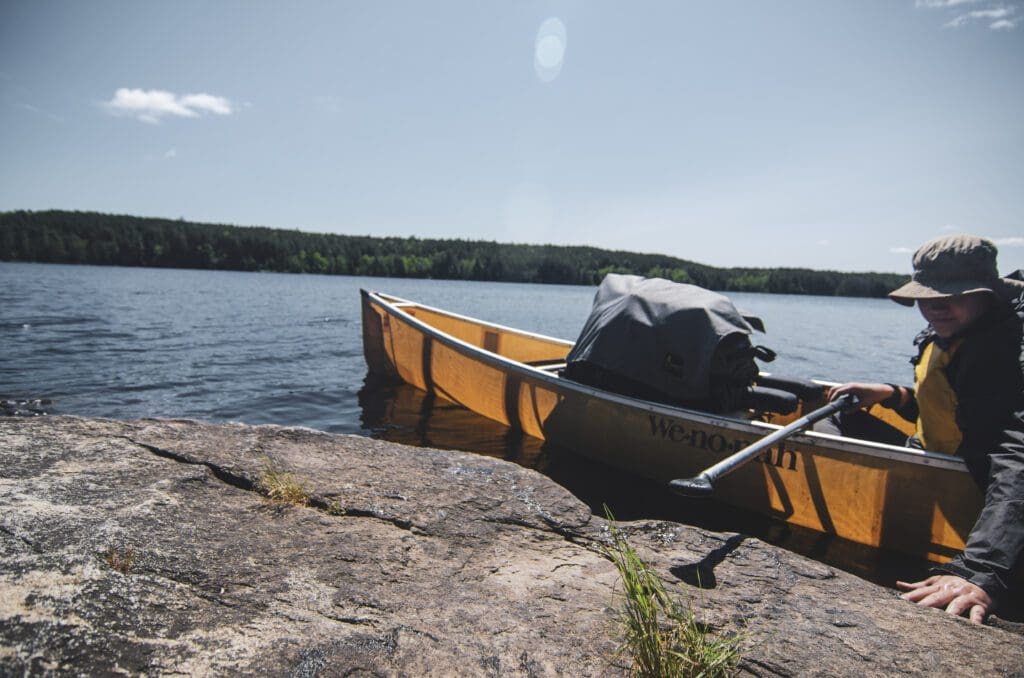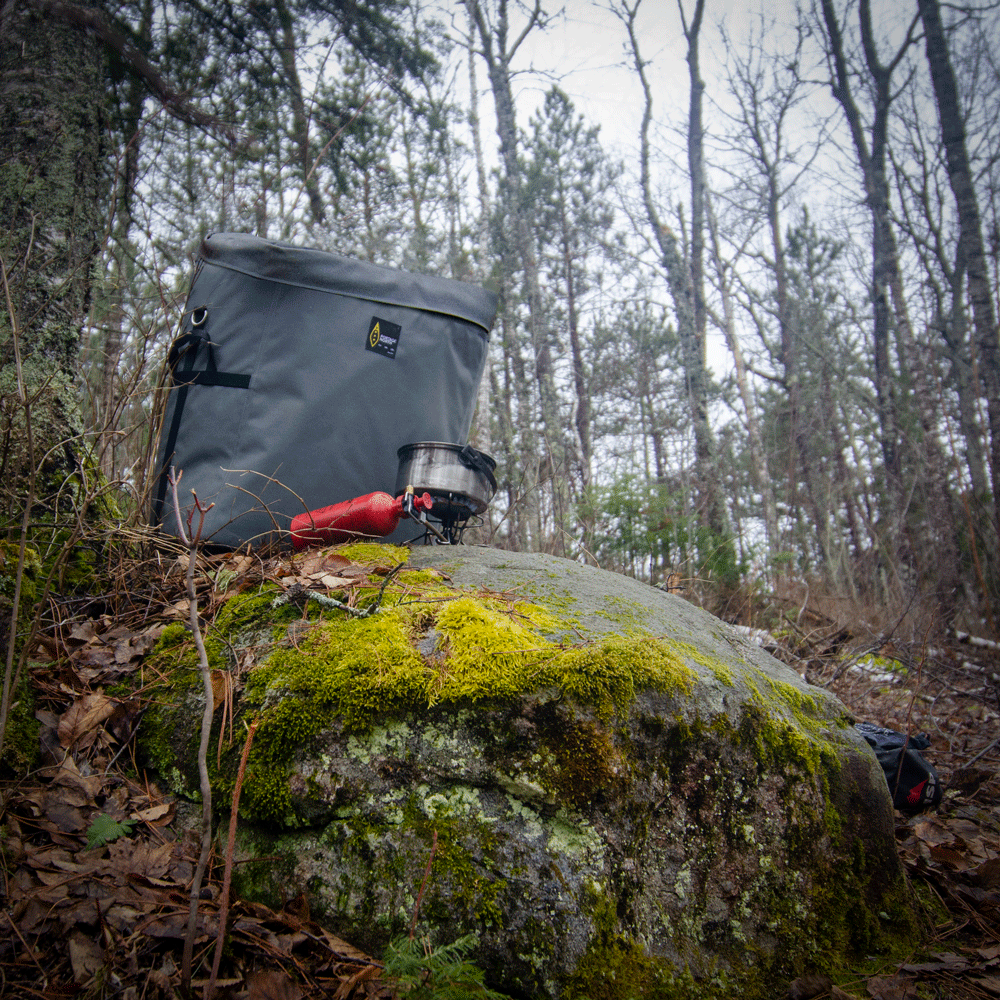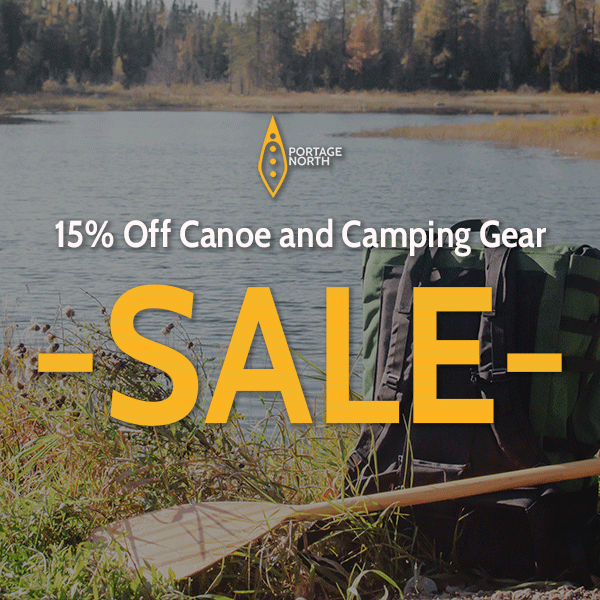How to Pack for a Canoe Trip – The Three-Pack System
One of the technical ways flatwater canoe trips are packed differently than backpacking trips is in how to organize gear. In a backpacking trip, the gear in the pack often belongs to the person carrying it, with a few communal items like food or shelter divided between party members. The presence of a bulky watercraft to portage on a canoe trip often necessitates that groups pack differently. Portage packs for canoeing are shorter and wider than backpacking packs and rarely have a frame. The dimensions of a portage pack owe to the need for sometimes carrying a pack simultaneously with a canoe, requiring a shorter body to stay out of the way of gunwales and yoke pads. It also sits more securely inside the floating hull of a canoe. Because of the need to carry the canoe and packs, many groups, including many outfitters, adhere to some version of the three-pack system. The three-pack system is different than backpacking, and for newcomers to the activity, it's important to put thought into your setup before loading up your gear and hitting the water.
Equipment Pack
In the three-pack system, gear is divided by type, not ownership. One pack is dedicated to tools and equipment and is often referred to as a "gear pack," "equipment pack," "e pack," or "that *$^&*% heavy pack" (just kidding, though it is often one of the heaviest packs on a trip.) This pack includes things such as tents, tarps, cookware (sometimes this is put in the food pack), a first aid kit (sometimes packed separately), saws, fishing tackle, cook stoves, bear bag hanging kit, paracord and rope, water filters, and other gear shared amongst group members. Usually, this is one of the larger and heavier packs, alongside the food pack, and, by extension, is one of the packs least likely to be double-packed with the canoe. The bulkiness of gear included in an Equipment Pack often necessitates a large-volume pack such as the Outfitter 120 or 90, the Voyageur 4, or the Equipment Pack 77, depending on group size.

Food Pack
One of the heaviest packs on day 1 of the trip is the Food Pack. Thankfully, as the old saying goes, "It's the only pack that should get smaller as the trip goes along." The food pack includes all the meals and snacks a group requires for their trip. A food pack can be a portage pack, such as Food Pack 68 or Outfitter 85, that requires hanging from a tree with a bear stop system. They can be a cooler pack designed to keep meals cool for days into a wilderness adventure. A food pack can also be a barrel of some variety carried with a packing harness such as our Barrel Sling. Either way, the food pack is often heavy to start the trip and lighter to end it. I favor moving some equipment over to the food pack throughout the trip, balancing the weight of the group's two heaviest packs. Sometimes, in small groups such as solos or tandem two-person groups, the food pack is included inside the equipment pack, often as a smaller pack, stuff sack, or bear canister that is stored separately during the night.
Personal Pack
One aspect of the three-pack system is that there are usually three types of packs, though often multiples of some types. Often, there is only one Equipment Pack and one Food Pack, though larger groups can have more. The final type of pack usually included is the Personal Pack. This holds the personal effects of each group member, including sleep setups, clothing, and personal items. Usually, 2, 3, or 4 group members share one personal pack, and it can be a mid-sized pack such as the Voyageur 3.5 or a pack adjustable to oddly shaped contents such as the Outfitter 85.
A final note: some groups utilized an add-on to the three-pack system such as a "guide pack" for the group leader to keep by them. It is often a smaller pack kept for special use, such as emergencies, where it will have a first aid kit and perhaps a locator beacon. Some groups even have a separate pack for fishing gear, photography equipment, or other specialty uses. Regardless, find the packing solution that works for you but, if you are new to canoe camping, build your setup on the tried-and-true three-pack system! It'll give you a reliable foundation for a successful adventure ahead.


